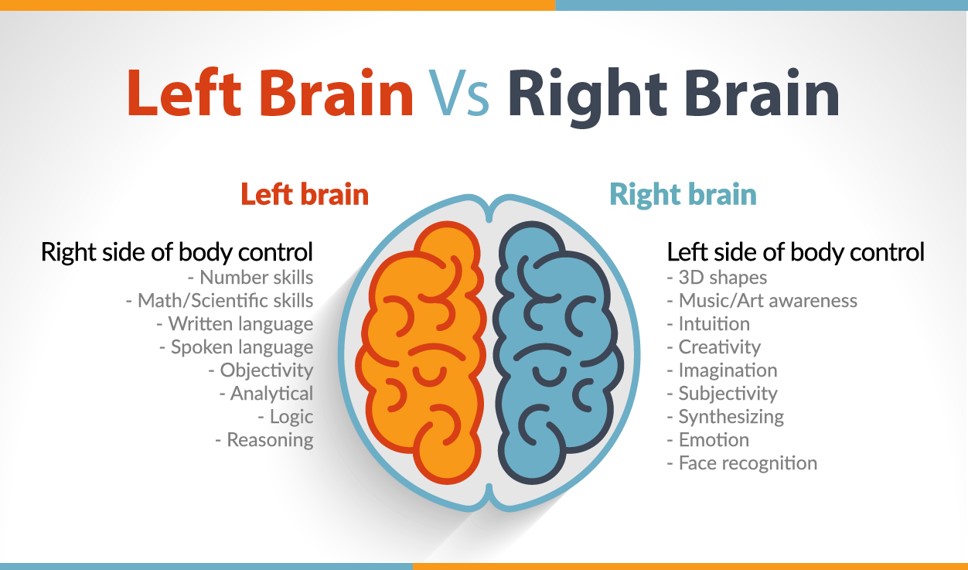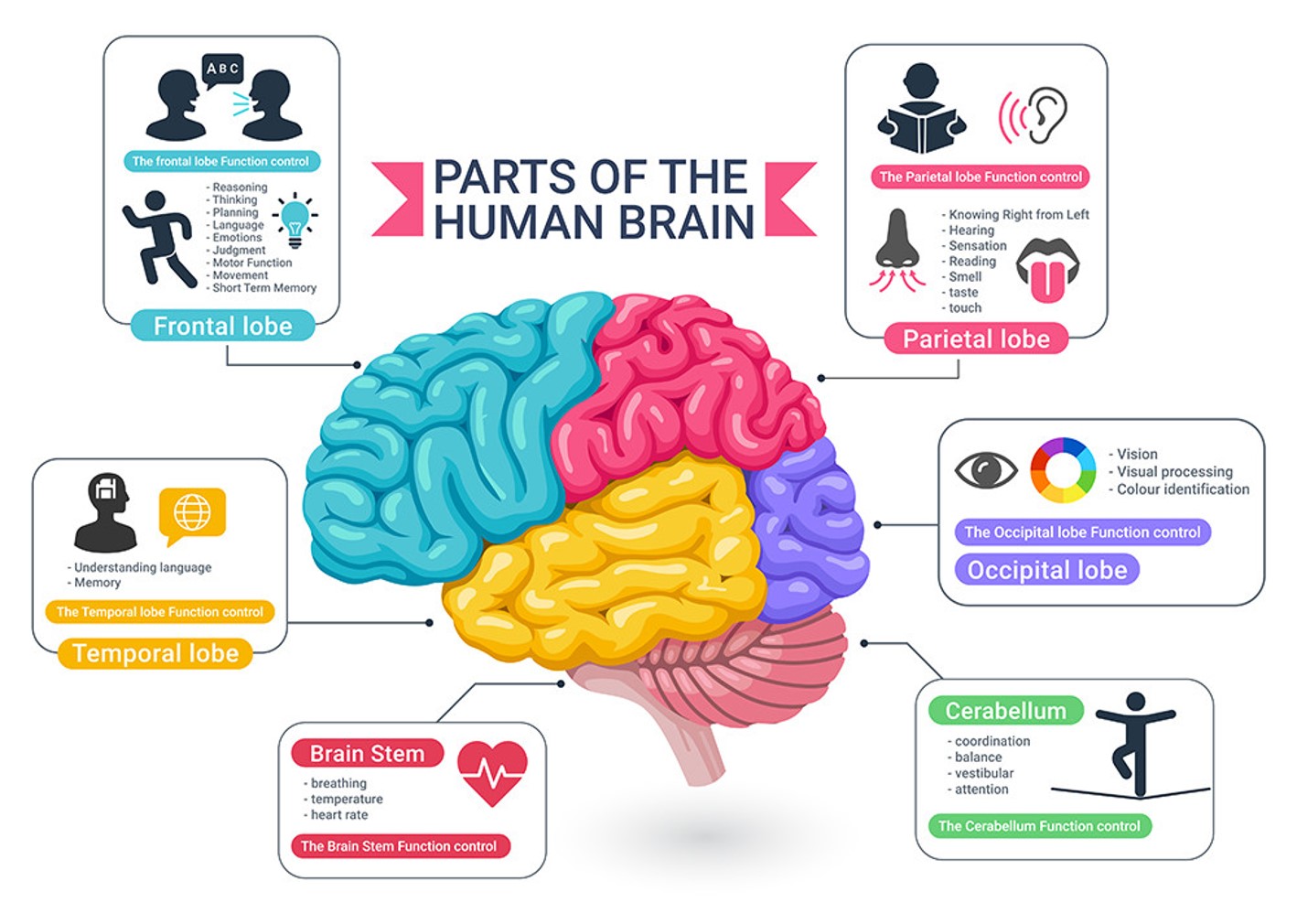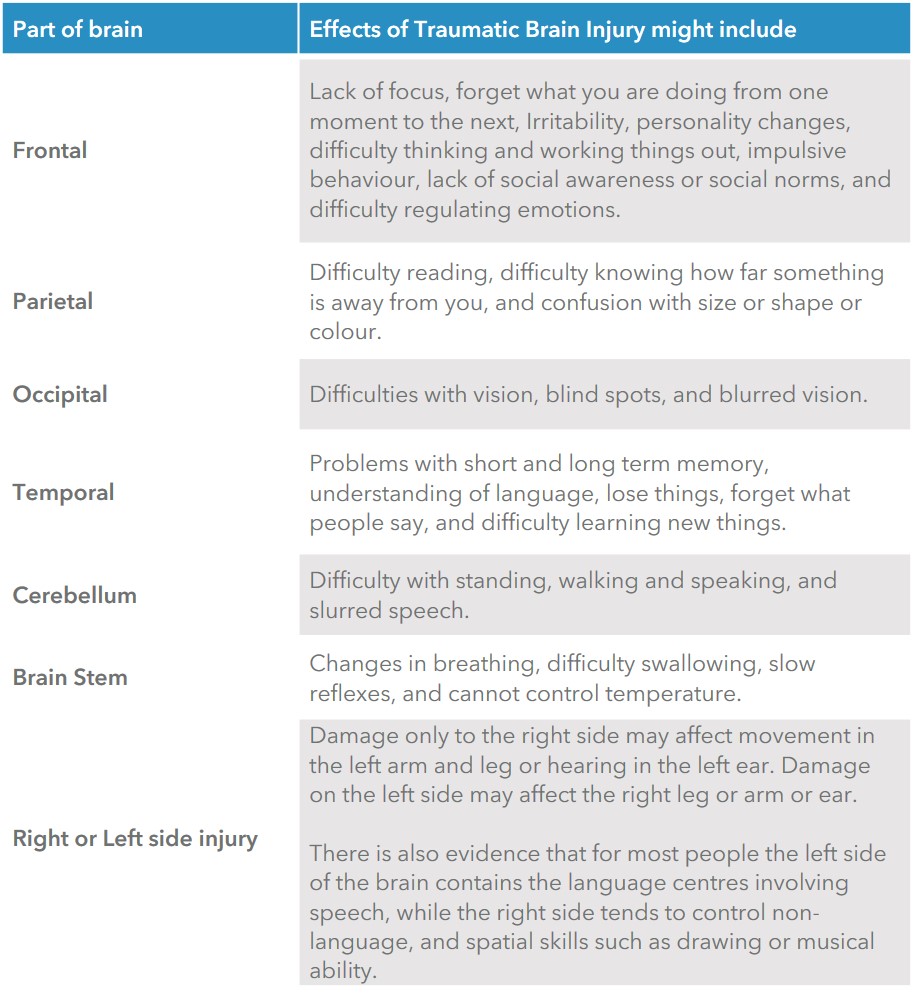Call us 1800 243 232
Call us 1800 243 232
To better understand Trauma Informed Support, it will be useful to know a little about how our brains work.
In this module we will look at
The brain controls everything we do and how our body functions. In the video below we will find out more about the different parts of the brain and what each part controls.

The brain is divided into two hemispheres, left and right, and is joined by communicating cells called the corpus callosum. Each hemisphere controls different functions.

The brain then divides into 6 main sections, 4 of which are called lobes. Each lobe controls particular body responses, functions and actions, but at the same time different lobes may do different parts of one function.

Click on each tab below to reveal a more complete list of functions for each lobe.
One in every 45 people in Australia live with a brain injury. Some people are born with a brain injury, others acquire a brain injury. An Acquired brain injury (ABI) refers to any type of brain damage that occurs after birth.
An ABI is a significant thing and it can happen suddenly. A person is just going about their day-to-day activities and, all of a sudden, there's a trauma and life changes.
There are some general things that a person with a head injury might experience:


ABC News: Traumatic Brain Injury – The Silent Disability Impacting the Lives
Thank you for taking part in Anglicare’s Trauma Informed Support Training. Please complete the short quiz below to finish the training.